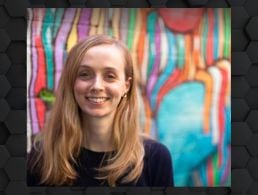We hear from a data analyst and a data scientist at Aon to learn more about the differences and similarities between the two roles.
The ability to work with data is a highly sought-after and increasingly important skill. Analysing it, understanding it and applying it requires different approaches and that’s what sets various data-related roles apart. But what exactly is the difference between data analysts and data scientists?
To learn more, Siliconrepublic.com spoke to two employees – senior data analyst Beatrice Russell and data scientist Dylan Butler – at Aon’s Centre for Innovation and Analytics (ACIA). Both Russell and Butler draw on their data expertise to inform software solutions for the insurance industry, but they spend their days on different types of work.
What’s the difference between data analysts and data scientists?
Russell: Data analysts tend to wear different hats and there are particular skillsets attached to each of the specialisms. There’s the statistical analysis and modelling of the data, understanding and solving conceptual and abstract problems, creating data visualisation and telling a story to communicate the finding.
You also have duties such as data manipulation and coding to automate your everyday, regular reporting. If these were the spokes of a wheel, you’d want to have a good grasp of all of these skills and maybe choose to specialise in one or two.
Industry knowledge is very important too. This informs the assumptions, type of analytics employed, isolating the key findings from the noise and quickly identifying issues and errors in the data.
It becomes important to appreciate the nuances and complexity of the problem and be able to clearly communicate that to the technical and less technically inclined stakeholders. Working effectively together in a team and with different stakeholders and specialists is important to ultimately find the simplest and most effective solutions.
Butler: Patience is very important for me as a data scientist; taking time to truly dissect the problem at hand. Always ask yourself why you are doing something and how it contributes to solving a problem. I recommend coupling this with an understanding of statistics and a knowledge of Python to form a strong arsenal to combat most problems.
One of the most important tasks for a data scientist is pre-processing the data. We don’t always get lucky with a perfectly structured dataset and most of the time the data is a complete mess. Other interesting duties include building predictive models, training custom named-entity-recognisers and identifying rich data sources, to name but a few.
What are the attributes of a typical data analyst and a typical data scientist?
Russell: Curiosity. This is critical and everything else follows from that. Having an open mind, taking the initiative to continuously develop your technical skills and industry knowledge and a certain (healthy!) restlessness until you get to the bottom of the problem. Creativity tends to be underrated in analytical roles, but it’s an important trait to develop no matter what area or discipline you’re in.
Butler: Most data scientists that I stumble upon usually possess set of similar traits. The one I almost instantly notice in most data scientists is the intense passion they have for their job. Solving problems, using a vast array of technologies and creative thinking is basically a dream come true and a key motivator for individuals looking to venture down this career path.
Another common trait is curiosity. Data scientists will not just take the first solution. Instead, they continue to question and seek a deeper understanding of the problem to uncover the best solution.
What kinds of tools and technologies do you use?
Russell: We’re lucky in Aon to be using a lot of the latest technologies and we can be relatively tool-agnostic here. As a data analyst, you’d want a good data-wrangling tool to merge and transform datasets and carry out the analytics and modelling, and a strong visualisation tool to build dashboards and tell a story.
Open-source software is always a good bet. Here in ACIA, we use a lot of open source as well as specialist tools like Alteryx, Tableau and [Microsoft’s] Power BI.
Butler: A foundational tool for myself is Python. Along with the massive collection of libraries available for data manipulation, it is extremely easy to use and highly readable. To develop our hypothesis in ACIA, we have the option of using the cloud machine-learning platforms AWS SageMaker and Cloudera.
Other core technologies such as Scikit-Learn, Pandas and NumPy are all used daily by most of the team. A lot of the projects that I work on are based on natural language processing; frameworks like SpaCy and Gensim enable us to rapidly deliver in this space.
What’s it like to work at Aon in your data roles?
Russell: It’s a fantastic place to work. ACIA is big enough to put your hand up for lots of different projects to suit your skillset and small enough for you to be supported and heard. This is particularly important when we’re all working from home and it’s easy to feel lost.
Also, as part of a global organisation, you get to participate in both local and global programmes, which is a fantastic opportunity to learn and grow. There is always great support from the management and leadership teams to invest in you and help you develop in your chosen field.
Butler: My career at ACIA began as a data analyst. Over the four years of my degree, I had only scratched the surface of working with data. I wanted to give myself a solid baseline and understanding of the insurance industry and how the data is used to fuel innovation.
The skills and experiences collected helped pave the way for me to begin my career as a data scientist. Aon understood and supported my career goals and provided a solid column of support to get me there.




